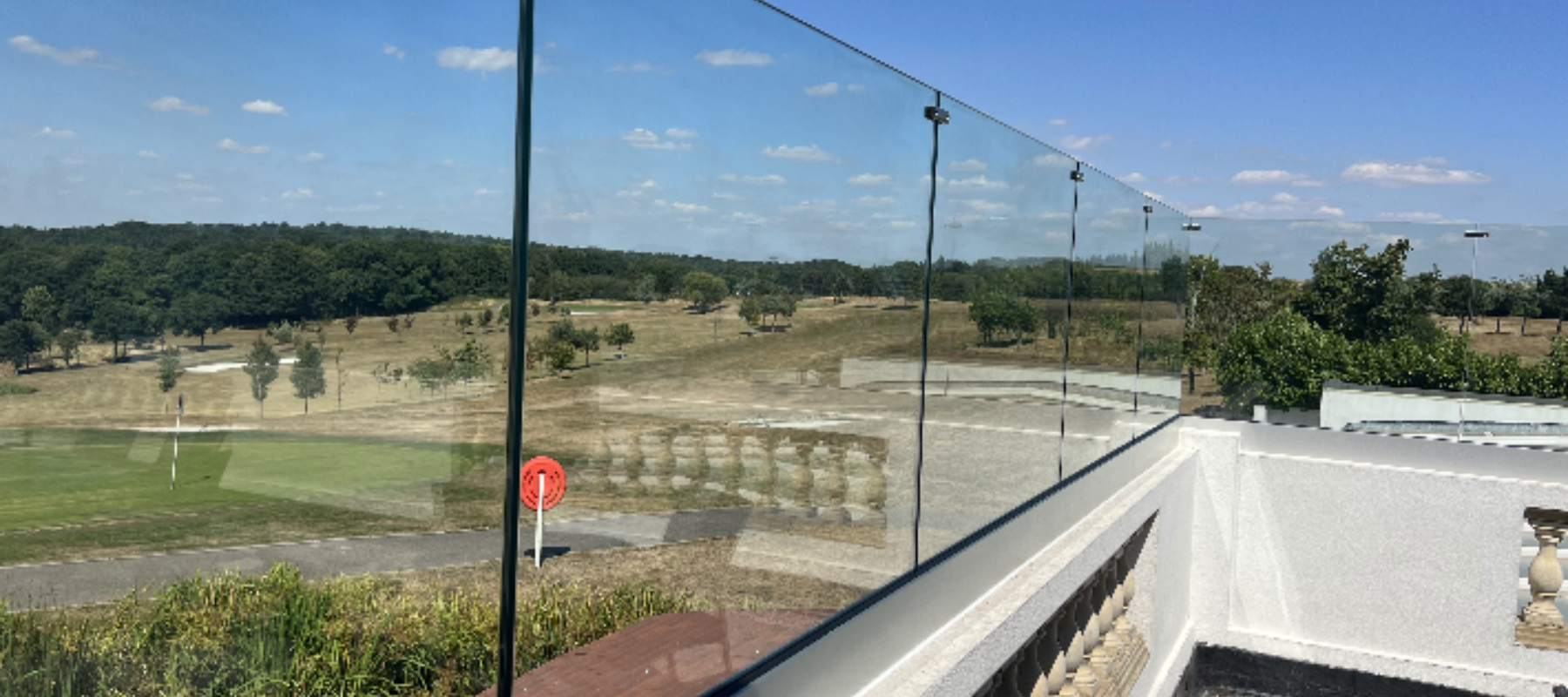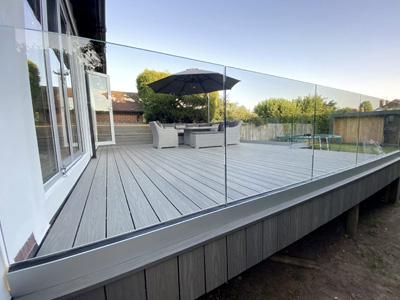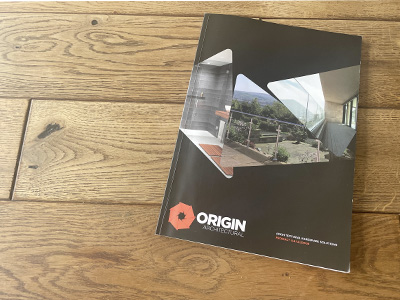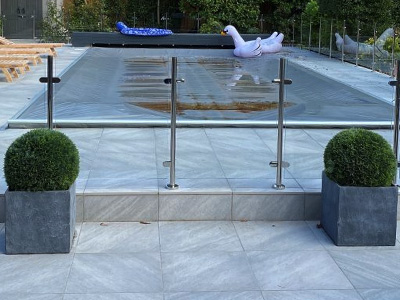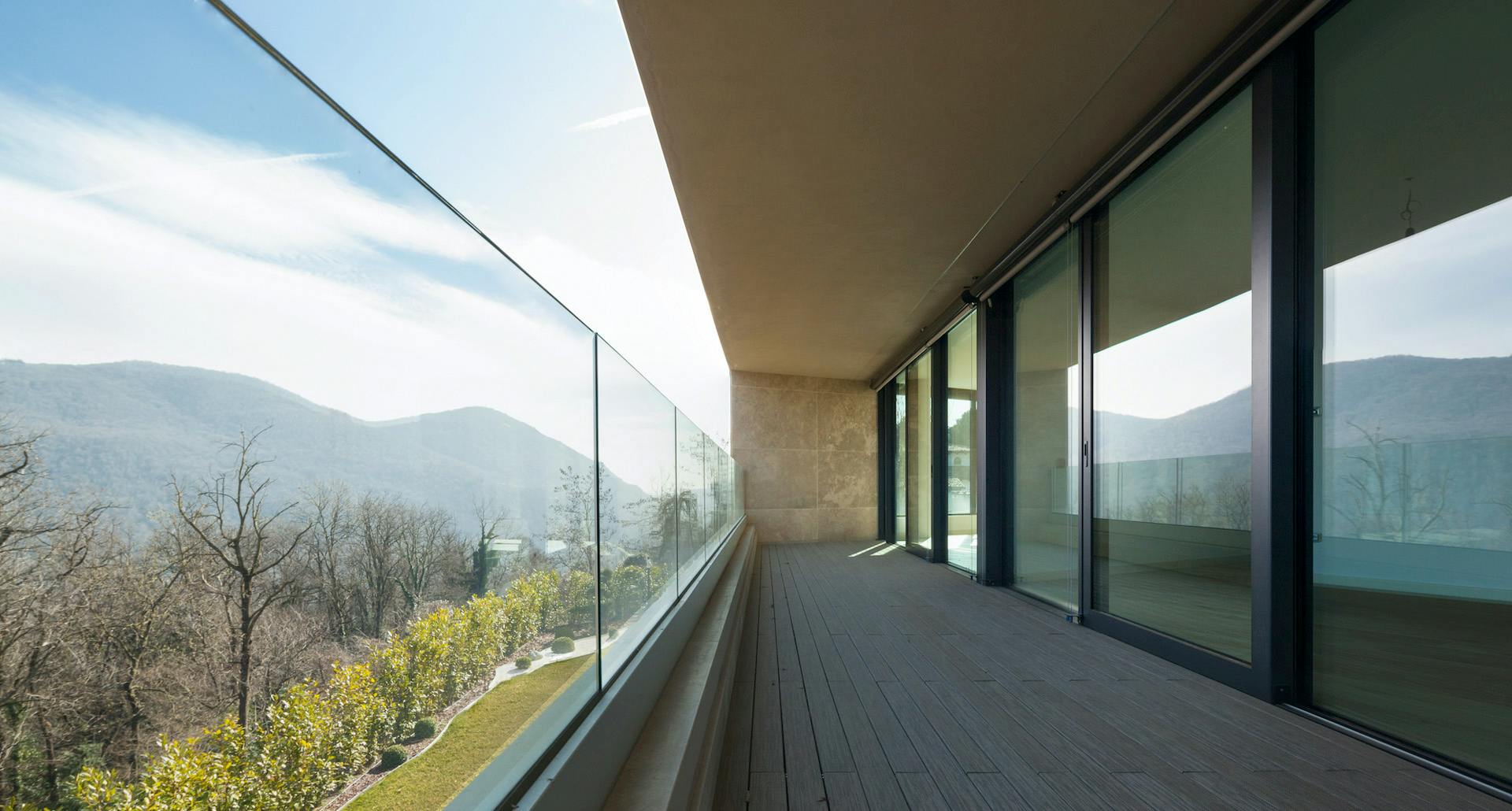Get An Instant Online Quote Now On Your Balustrade System
Design Your Balustrade
Design your perfect Glass Balustrade today using our online Balustrade Designer and get an instant quote.
Request Your Catalogue
Download your free catalogue to help you choose the perfect balustrade solution for your project.
Structural Glass Balustrade
Here at Origin, we offer a wide range of structural glass solutions. To make things easier for you, we have set out below the questions that we are most commonly asked:
What is a structural glass balustrade?
A structural glass balustrade is where the glass forms part of the structure of the building. It is often referred to as frameless glass or infinity glass. It is essentially made of extruded aluminium channel which is fixed to the structure of the building. The channel is most commonly base fixed (i.e. fixed through the bottom of the profile) but can also be side fixed (where you fix through the side of the profile). When fixing through the side of the channel, you will usually need to clad the outside leg of the channel to cover the fixing holes. The glass is secured with a dry glazed fixing system. There is no need to use any resin and the angle of the panel can be adjusted once fitted inside the profile.
What’s the minimum thickness of structural glass in a glass balustrade system?
The thickness of the glass that you use depends upon the application. The more crowded the area and the higher the fall that the glass is protecting, the thicker the glass. The lowest risk areas are often applications such as domestic patios that are less than 600mm from the ground. In such applications, you can use 12mm toughened glass. The profiles should not be used to secure any glass that is thinner than 12mm. Read our FAQ section below which answers more questions on structural glass balustrades.
Frequently Asked Questions
All of our systems are fully tested. The maximum span for a structural glass panel will depend on the application but each panel should usually be not much more than a meter in width.
All of our frameless glass systems are fully tested when fixed to steel or concrete and are very safe. You just need to check that it is tested to the correct line load test to meet your application. Our technical team can help you with this if needed.
We supply a wide range of fixings for all our structural (or frameless glass) profiles. You just need to check the profile that you are using and what you are fixing to. The cost of the fixings depends on the material that you are fixing to. Certain of our profiles use a countersunk hole and certain do not. If you are unsure of the fixing that you need, please contact our technical team.
This again depends on the application and whether or not you are using a handrail. For a domestic balcony that is protecting a fall of 600mm or more, you should use 17.5mm toughened laminate glass if you are not having a handrail or 15mm toughened glass if you are having a handrail. A laminate glass is simply two pieces of glass that are bonded together with an interlayer. If one side of the panel is ever damaged, the other side should remain in place.
As standard our panels are not heat soaked. We do this on the basis that we want to offer the most competitive price to our customers. It is no problem at all however to supply heat soaked glass. Heat soaked glass is usually only required if the glass is continually exposed to particularly hot sunshine. It is three times more likely to be resistant to heat when compared to normal annealed glass.
Our structural balustrades are tested to any load requirements that your application requires. It is important to remember that what determines whether or not your structural glass balcony meets a specific load requirement is usually not the profile itself but the material that you are fixing to and the glass thickness that you use.
We do have systems that can support glass up to 1.8m high. The glass should usually be laminated sentry glass. This has a stronger interlayer than standard PVB laminated glass. A privacy screen is usually not in itself a structural balustrade. Our technical team can advise you on the best solution for your frameless privacy screen.
Weather conditions will not adversely affect the profile itself. Extremes of weather can however affect the glass itself. In certain weather conditions such as extreme heat or wind you may need particular glass thicknesses or glass types to ensure the longevity and performance of your structural glass balustrade.
There aren’t any particular limitations that architects face when using structural glass balustrades. It is always better to involve us as early as possible in the planning process. We can then advise you on which profile and glass thickness is best for your application. Our frameless profiles are installed in a slightly different way. We can also advise you on which profile will be most cost efficient for your application.
Installing frameless glass balustrade is usually pretty straightforward. We have installation videos for all of our frameless glass products. Where most care should be taken is the installation of the glass itself. We would always recommend using suction pads to carefully lift the glass into place. For thicker (structural glass) and for installing glass at height certain lifting equipment may be required.
Browse Our Frameless Glass Channel Systems
Structured Glass Balustrade Images
Browse some examples of structured glass balustrade



Balustrade Technical Support
GOT A QUESTION?
Our experienced team are always happy help
Just fill in this contact form and we'll get back to you as soon as possible. Alternatively, you can call get in touch using the methods below:Read Our Recent Articles On Glass Balustrade
Balustrade Regulations UK: Important Regs to Understand
How thick should the glass on a glass balustrade be?
Why are Glass Balustrades a Good Choice for Coastal Properties?
Why Choose Origin Architectural
For Your Glass Balustrade
Customise your balustrade to match your style with premium powder coating, ensuring a perfect match to your color scheme. Explore our diverse range of systems tailored to your preferences: choose contemporary frameless designs, classic post and rail systems, or modern spigot, glass button, and glass balustrades with a top handrail.
Got a Question?
Our friendly and experienced UK customer service team are on hand to help and answer any questions you may have via phone or email.

